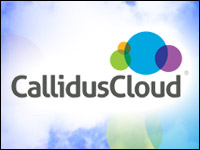
“Caught short by Salesforce, SAP targets ‘front office’ market” is more revealing than SAP might like but the headline on Reuters’ story is appropriate to the announcements coming out of SAP’s annual customer confab in Orlando, Florida. It describes SAP’s new attempt to consolidate a group of about a dozen front office apps into a fully integrated customer relationship management suite — next year.
How do you say “lipstick on a pig” in a non-derogatory way? Look, CRM is over 20 years old now. For most of the early days, the vendors scrambled to integrate their apps into a coherent whole, supporting customer-facing processes in sales, marketing, customer service, field service and help desk. Back in the day, companies merged trading stock instead of cash to see who could build the biggest suite the fastest.
Siebel won, but it was a temporary victory because Salesforce emerged with a completely new way of delivering products that avoided the long, risky and expensive implementations that were part of both CRM and enterprise resource planning.
Working on a Plan
So integration is over, despite what Reuters reported from Chief Executive Bill McDermott’s keynote in which he said that SAP “has quietly been working on a master plan to disrupt CRM,” and that “SAP is focused on CRM big time.”
However, he also said that “the legacy CRM systems are all about sales — SAP C/4HANA is all about the consumer. We recognize that every part of a business needs to be focused on a single view of the consumer.”
All of that has been CRM dogma since Paul Greenberg published the fourth edition of CRM at the Speed of Light in 2009. So it just doesn’t square. The ERP market is mature, and CRM will double in size to US$66 billion between 2016 and 2021, compared to ERP’s growth to $39 billion in the same span, Gartner has predicted. Clearly, SAP is looking for new markets.
There’s nothing wrong with that — it’s what competitors do. However, SAP isn’t bringing anything new to the discussion, and sadly it isn’t even bringing product until next year. You might say that conferences are forward-looking, but this news is forward-looking only for SAP.
Who Benefits?
SAP and several other vendors have been busy developing CRM to satisfy their legacy customers. Much of SAP’s product line is deployed on-premises at a time when cloud computing has been rapidly gaining ground and acceptance, which leaves legacy vendors exposed.
Oracle has been having a similar experience. If you ask me, it stayed out of the cloud market too long, but it already has been in the cloud for years and is executing on a new vision with three levels of product for infrastructure, platform and apps. Its revenues are showing good market acceptance too.
SAP, on the other hand, doesn’t want to be a player in the infrastructure wars, which is smart from the get-go. It also has good customer-facing products and some cloud solutions, which it brings to market in partnership with Amazon Web Services when needed. All that is good, but it is late, late, late –and not for the first time.
A decade or more ago, SAP tried to go toe-to-toe with Siebel for market share, and it was neck-and-neck in the Gartner Magic Quadrant for a few years. However, deeper analysis showed that SAP had a big collection of shelfware — CRM that never would be implemented — and it was twice as large as Siebel’s.
Up to half of SAP’s CRM was not implemented at the time. The company was booking all sales as CRM, reasoning that it was delivering a package of all of its products — but customers installed the ERP and left the CRM on the shelf.
Today, SAP wants to gain market share in CRM again, but the new messaging clearly is aimed at the installed base that it stands to lose to more nimble cloud competitors with good integration to the back office.
The ERP business is relatively secure, if only because it’s so difficult to rip out and replace with something newer. We all still have scars from the last time the industry went for an upgrade. It was the turn of the century, and no one wants more of what happened then.
My Two Bits
Good for SAP. It’s bringing order to its suite of customer-facing apps, and many of its customers will benefit from the move.
But don’t tell us that this is “new” or “exciting” or “disrupting” for anyone but SAP.

























































welcome to the league